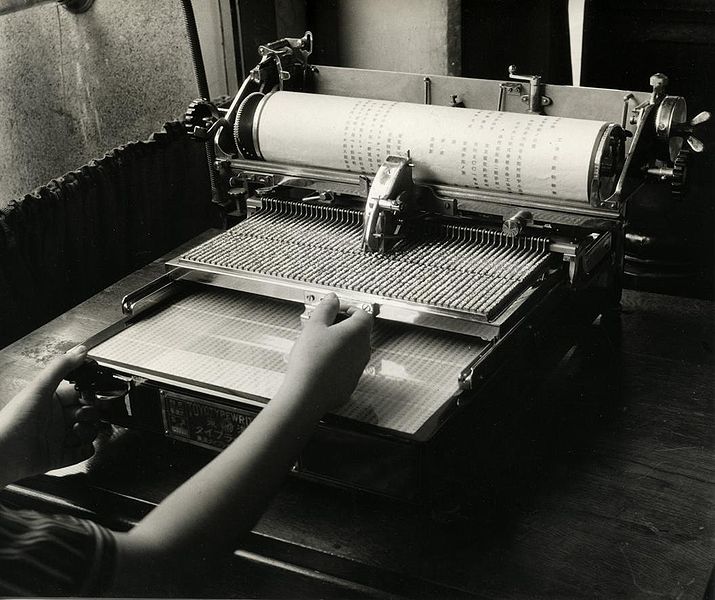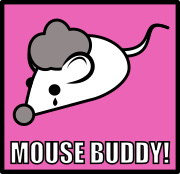|
Quorum posted:Unfortunately bishops are powerless against covid because it travels in straight lines and they can only move diagonally. The bishops are messing with Pythagoras. 
|
|
|
|

|
| # ? Jun 1, 2024 18:55 |
|
No Safe Word posted:TIL Kosovo is just a character in Chinese I guess The use of these characters for this "vo" and "sa" sound appears in other transliterations per wiki, a lot of them French: 沃索勒 - Vaux-Saules (commune in Côte-d'Or) 特雷索沃 - Trésauvaux (commune in Grand Est) 薩沃索 - Sasovo (town in Ryazan Oblast) Sauzer fucked around with this message at 14:55 on Nov 9, 2020 |
|
|
|
One thing I've been wondering about countries with logographic systems - what do their keyboards look like? Do they basically have to learn the equivalent of thousands of ASCII combinations in order to type efficiently?
|
|
|
|
There are several methods of entering Asian languages. I believe the majority write phonetically in one way or another and that phonetic input is transformed with an Input Method Editor (IME) into the more complex text. In Japanese for instance, you could type one of the many homonyms phonetically (in hiragana or romaji) and when you finish typing, there will be a menu of possible character matches for what you typed, which you select by the mouse or arrow keys and hit space to change. You do that for anything that uses Chinese characters. It sounds cumbersome, but it's really not that bad. I think Mandarin pinyin input works similarly.
|
|
|
|
The boring truth is that the most popular input method is phonetic. If you want the characters for “Beijing”, you type just in those same Latin characters and “北京” appears on screen. When homophones create ambiguity, a selection of characters is presented. There are also stroke‐based input methods. Theoretically you could have like a pointillist logogram, but in practice there are only so many ways to put the brush or pen to paper. So you hit some keys that correspond with the broad strokes of how the character is drawn. This post has some information about regional variation and alternate input systems.
|
|
|
|
I've seen Chinese friends use it in person and it still looks like a colossal pain in the rear end; I hate autocorrect enough and basing an entire input method around what's practically that just sounds awful. But the Chinese presence on the internet clearly says otherwise. I guess the advantage is each character is a lot more information dense, so even if the input is maybe more fiddly, you have to do a lot less of it than alphabetic languages?
|
|
|
|
Platystemon posted:The boring truth is that the most popular input method is phonetic. If you want the characters for “Beijing”, you type just in those same Latin characters and “北京” appears on screen. When homophones create ambiguity, a selection of characters is presented. lol really Western culture wins again, (almost) flawless cultural victory. Although I'm guessing the 'phonetic' input is specifically based on English. Hats off to the Englishpeople, for all of the poo poo we give them
|
|
|
|
Phlegmish posted:Although I'm guessing the 'phonetic' input is specifically based on English. Hats off to the Englishpeople, for all of the poo poo we give them
|
|
|
|
I’m sure someone has made a Wade–Giles input manager for kicks.
|
|
|
|
Time to post this classic again (Latin script): I can only imagine 15th-century people across Eurasia looking at this map and going dafuq  For multiple reasons, of course. For multiple reasons, of course.
|
|
|
|
Phlegmish posted:lol really In Japanese, they use the domestic system of hiragana, which are already phonetic and not too dissimilar from our own alphabet in logic. There's 46 hiragana, so with some clever use and lay-out of touchscreens (like how you'd write an e with accent in French on your own smartphone), you can fit them all on a small screen. Here's how it looks when you're texting somebody:  On this image, all the -a sounding hiragana are in large, white symbols in the center, and all -u, -e, , -o and -i ending hiragana are in the smaller, gray symbols around each of the -a ending hiragana, at the top, right, bottom and left, respectively. For example, at the very top in the middle, you have the symbol for "ka" (written as か). If you just press it once, you write か. If you hold it and swipe up, you will write the matching -u hiragana, "ku", written in Japanese as く. Depending on which direction you swipe, you can write ku, ke, ko or ki. So, if you wanted to write "Tokyo", you would input the hiragana とうきょう by swiping the symbols on the touchpad in the corresponding directions, and autocorrect will suggest a list of kanji matching that pronunciation (at the very top would be 東京, as this is most likely the one you'll be looking for when writing "Tokyo") So, all things considered, it's not too different from how us Westerners do it, it just involves accepting the autocorrect suggestions way more often than in our own writing system. The *actual* interesting story, is how they did printing presses and typewriters! There were no shortcuts there, you'd need thousands of different characters and you'd need to swap entire components of your typewriter to get the correct one.  "The Japanese typewriter, however, was bulky and laborious to use. Unlike the English-language typewriter, which allows the typist to key in text quickly, one needed to locate and then retrieve the desired character from a large matrix of metal characters.[4] For instance, to type a sentence, the typist would need to find and retrieve around 22 symbols from about three different character matrices, making the sentence longer to type than its romanized version.[4] For this reason, typists are required to undergo specialized training and word processing was not part of the duties of the ordinary office workers.[4]" (from Wikipedia) http://www.weirduniverse.net/blog/comments/japanese_typewriters An additional fun fact: some Kanji we simply don't know what they mean. They are called "ghost kanji": we can write them, they might be in dictionaries, but we don't know how to pronounce them or what their meaning is. At least one such "ghost kanji" can be traced back to fuckery involving typewriters and poor quality photographs/scans. "Perhaps the most famous of these mysterious kanji is 妛 (whose pronunciation is listed in some dictionaries as akebi). After a formal investigation of the JIS Kanji Code in 1997, academics found no record of 妛 in the Kangxi Dictionary (the 47,000-odd-character Holy Grail of Chinese pictographic knowledge) and JIS technicians could locate no region or family name in Japan that used it — that is, until they came across 𡚴原 (Akenbara), the vernacular name of a small district in Shiga Prefecture. Look closely and you’ll notice that 妛 consists of radicals 山, 一 and 女 while the kanji from Shiga is exactly one brush stroke less complicated. With literally no other lead to go on, the JISC concluded that it had mistakenly registered what was supposed to be 𡚴 as 妛, in effect creating an entirely new digital character with no historical or cultural substance — a ghost of a character, if you will. It was later discovered that the local district’s method of printing 𡚴 at the time involved cutting out the 山 and 女 radicals from other preprinted kanji and pasting them together before photocopying the result. The line-like shadow produced by the overlay is what led to the committee’s incorrect reading. Mystery solved." https://www.japantimes.co.jp/life/2018/10/29/language/ghost-kanji-lurk-japanese-lexicon/ Since this is the maps thread, a somewhat related map: 
|
|
|
|
Alphabets kinda have an inherent advantage in spreading across diverse languages I figure, by virtue of versatility. Romaji and pinyin work near flawlessly for example, katakana mangles things but is still recognizable (fainaru fantashii), and hanzi really struggles.
|
|
|
|
Alphabets proved their value with moveable type. Everything since then is just rubbing it in.
|
|
|
|
Phlegmish posted:lol really Joke is on you. The Chinese phonetic romanization is originally based on french system and the japanese one the german system. Because everybody hates anglos.
|
|
|
|
Platystemon posted:I’m sure someone has made a Wade–Giles input manager for kicks.
|
|
|
|
Phlegmish posted:Time to post this classic again (Latin script): Since you're posting that I might as well post this 
|
|
|
|
Kamrat posted:Since you're posting that I might as well post this Inuktitut and Cree look like scripts for extraterrestrial languages.
|
|
|
|
I hate to admit this but more than a few times on public transit I've gawked fascinated over the shoulder as Japanese and Chinese people input on phones and tablets. It's just magical to watch, like they're conjuring the characters out of nothing.
|
|
|
|
Pope Hilarius II posted:Inuktitut and Cree look like scripts for extraterrestrial languages. Yeah a bit, and Tifinagh of course.
|
|
|
|
The post Platystemon linked mentions this but although Pinyin input on a qwerty keyboard is king in China, there are alternative input methods too based on the shape of the actual characters rather than the sounds. They used to be much more common and are still maybe a good investment to learn if you want to type longer documents really quickly, because scrolling through banks of characters with the same sound gets old fast, but predictive input has gotten good enough that it's unnecessary for the vast majority of people now. If you hate relying on autocorrect that's probably your best bet.
|
|
|
|
CommonShore posted:I hate to admit this but more than a few times on public transit I've gawked fascinated over the shoulder as Japanese and Chinese people input on phones and tablets. It's just magical to watch, like they're conjuring the characters out of nothing. The stroke order input method on a number pad layout is loving wizardry. This goes both ways though, my students in China were in complete disbelief I could touch type. Since it wasn't mentioned, Korea doesn't do anything special. Keyboards there are labeled with both Latin and Hangeul letters and you just type, there's no need for a fancy input due to being an alphabet. They do split it so consonants are on one side and vowels on the other, I forget the layout but I think consonants are left side and vowels right.
|
|
|
|
What I find interesting and weird is that Chinese school children, when they learn reading and writing, learn pinyin first. Once they have learned pinyin they then start learning the Chinese written language, using pinyin as a pronunciation guide for each character.
|
|
|
|
Carbon dioxide posted:What I find interesting and weird is that Chinese school children, when they learn reading and writing, learn pinyin first. Yep, that's what pinyin's designed for, a literacy aid. I honestly have no idea how you'd learn hanzi without it, and given how bad the literacy rate was prior to pinyin I'm not alone there. You can learn pinyin in a couple days. Chinese kids are learning to be literate in hanzi well into middle school. Not sure what grade it ends but the seventh graders I did extra classes for occasionally were still learning to read. And that was at a super fancy advanced school.
|
|
|
|
Epoch Times?
|
|
|
|
Grand Fromage posted:Yep, that's what pinyin's designed for, a literacy aid. I honestly have no idea how you'd learn hanzi without it, and given how bad the literacy rate was prior to pinyin I'm not alone there. Given this, for actual pen to paper writing in every day life (after you finish school etc) is there a subset of people who write in pinyin and don't use the characters? Or does everyone "graduate" to writing characters at some point during school?
|
|
|
|
Kamrat posted:Since you're posting that I might as well post this The Latin, Greek, Cyrillic, Arabic, and Hebrew alphabets all derivatives from the Phoenician alphabet. I feel like the Phoenicians don't get enough credit for inventing the writing system that 3/4 of the world uses.
|
|
|
|
Platystemon posted:The bishops are messing with Pythagoras.
|
|
|
|
Badger of Basra posted:Given this, for actual pen to paper writing in every day life (after you finish school etc) is there a subset of people who write in pinyin and don't use the characters? Or does everyone "graduate" to writing characters at some point during school? I've never seen native speakers write in pinyin for their own use, but there is a concern in Chinese education about people not being able to write anymore due to computer input methods. Hanzi is an excellent way for an alphabet person to realize that reading and writing are indeed separate mental skills--I can read a lot of Chinese but I've mostly forgotten how to write it by hand. But when you're doing pinyin input electronically, it pops up the characters that you select, so you're actually using your reading skill, not your writing, when writing on a computer/phone. I don't know how much of this concern is real and how much is new technology handwringing, but it's out there. I suspect there's something to it.
|
|
|
|
There's an infamous shopping list by a Chinese academic which got picked up from a trash can by a linguist (really) and has some examples of writing in pinyin when you forget the character: People have speculated for ages about whether this kind of thing is going to lead to the demise/further reform of Chinese characters but I think the demise of handwriting will probably help their long-term prospects, if anything, by lowering the bar to learn them effectively.
|
|
|
|
Zohar posted:There's an infamous shopping list by a Chinese academic which got picked up from a trash can by a linguist (really) and has some examples of writing in pinyin when you forget the character: Ha, that's funny. Not surprising.
|
|
|
|
Badger of Basra posted:Given this, for actual pen to paper writing in every day life (after you finish school etc) is there a subset of people who write in pinyin and don't use the characters? Or does everyone "graduate" to writing characters at some point during school? Following up on what Grand Fromage said, that's certainly true for Japanese: you learn tons of characters all the way through high school and probably keep learning new ones through higher education and jargon (eg characters for medical or legal terms that you might just never have encountered before). There's whole sections of Japanese expats abroad who forget how to write some of the rarer kanji after a decade abroad and have to re-learn when returning to Japan. There was one episode of Game Center CX which blew my mind for this. The show host was playing some 80's super famicom game inspired by the literary classic Journey to the West, and there was a subtitle/scrolling text recapping the story and saying how the player characters were going to India. The word "India" was written using its kanji form, whereas in modern Japanese most people would use the loan word "India" written in katakana (the alphabet for loanwords and writing in all caps) As such, Arino was squinting at the kanji and trying to guess its pronunciation a few times before giving up and somebody from the camera crew told him that's the old school kanji for "India". It blew my mind that you could be 100% fluent in a language and see a word written in a new way and be completely stumped on both its pronunciation and meaning until somebody told you and made it click for you. It'd be as if some video game called Britain "Albion" except you've never heard of it before and can't even read the word so you don't know how "Albion" is pronounced until somebody tells you.
|
|
|
|
Zohar posted:There's an infamous shopping list by a Chinese academic which got picked up from a trash can by a linguist (really) and has some examples of writing in pinyin when you forget the character: Yeah the romanised version of that seems about a million times easier, personally I feel like I would be desperate to make this exact switch (though of course I grew up with the Roman alphabet).
|
|
|
|
PittTheElder posted:Yeah the romanised version of that seems about a million times easier, personally I feel like I would be desperate to make this exact switch (though of course I grew up with the Roman alphabet). Keep in mind that when you write "shi" that syllable has around 150 meanings, so even if you write the tone markers in (which no one ever does) it's still a mess. On the other hand, each of those meanings (for the most part) has its own character. Korean is also full of homophones and a pain in the rear end at times, but Chinese a language consisting entirely of homophones. As a native speaker you're better at guessing which one it is, but it would actually be harder to read if you're learning it. Characters look intimidating if you don't understand them, but they're not actually that difficult. It's just a lot of time. Part of why Chinese students are learning to read for so long is they use terrible outdated teaching methods of just rote drilling. I personally used the mnemonic method and was just breezing through, I went from nothing to absolute basic literacy in three months. If I'd given enough of a poo poo to continue I was on track to standard literacy in a year, which is pretty good for Chinese. And I'm not good at memorizing vocab, at all. Also, those are handwritten characters which are complete bullshit. I've known plenty of people fluent in Chinese who can't read handwriting.
|
|
|
|
I remember learning to read. It took like a second. Suddenly I just went "OH!" And text stopped being just letters strung together. But you can only have this happen with a phonemically or (if such a thing exists) phonetically written language. Well, that was my learning to read story, thanks for reading. (I'd learned the alphabet much earlier, of course.)
|
|
|
|
What's the population for each of these?
|
|
|
|
Weembles posted:The Latin, Greek, Cyrillic, Arabic, and Hebrew alphabets all derivatives from the Phoenician alphabet. I feel like the Phoenicians don't get enough credit for inventing the writing system that 3/4 of the world uses. You'll actually find that the Canaanites were the first people to have an alphabetic script
|
|
|
|
Sampatrick posted:You'll actually find that the Canaanites were the first people to have an alphabetic script the phonecians and hebrews were both from canaan
|
|
|
|
I don't understand Pinyin. If you're going to make a system to use the Latin alphabet why decide to make it completely unusable for pronouncing the word accurately? I understand every language that uses the Latin alphabet uses it a little differently, but even with something as far from Latin as Turkish or Japanese you can still get whats being said. Romanji may not be perfect but it will still allow you to vocalize something recognizable as the word. Pinyin on the other hand seems nonsensical. It's almost like Cherokee where the guy who invented it used letters he saw from Latin writing (because thats the only writing he knew about) but gave them unrelated sounds because he didn't actually know how to read it.
|
|
|
|
Grand Fromage posted:Keep in mind that when you write "shi" that syllable has around 150 meanings, so even if you write the tone markers in (which no one ever does) it's still a mess. On the other hand, each of those meanings (for the most part) has its own character. This gets brought up a lot in favor of logographic script, but homophones can't be a huge problem, can they? People still understand spoken Chinese, right? Or was the Norwegian skit about Danish secretly about Chinese all along? https://www.youtube.com/watch?v=s-mOy8VUEBk
|
|
|
|

|
| # ? Jun 1, 2024 18:55 |
|
Because it's not for you, an English speaker, to pronounce Chinese words with. It is a system to aid Chinese children in learning hanzi. Whether or not you know how to use pinyin had no relevance to its creation.Jasper Tin Neck posted:This gets brought up a lot in favor of logographic script, but homophones can't be a huge problem, can they? People still understand spoken Chinese, right? My observation from living there is Chinese speakers have to ask for clarification a whole lot more often than English speakers. However, I was also living in a region with multiple dialects that are, at best, vaguely mutually intelligible with Putonghua, so I can't say how much that affected it. In any case, when speaking Chinese you have to infer what people mean by context a lot. In written you don't have to because the characters are distinct. It is not an insurmountable problem, but by saying "why don't they switch to an alphabet?" you're asking for Chinese to change from a clear and unambiguous writing system to one which would be significantly less readable, just because as an outsider you find the characters intimidating. That's why it doesn't make sense. In the early PRC they did discuss getting rid of characters and decided against it. Grand Fromage fucked around with this message at 23:24 on Nov 9, 2020 |
|
|
































 Yes, it's like a lava lamp.
Yes, it's like a lava lamp.





